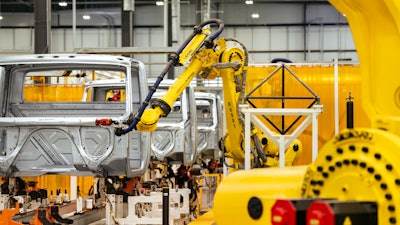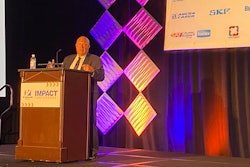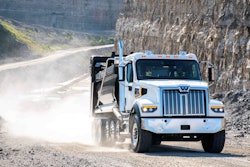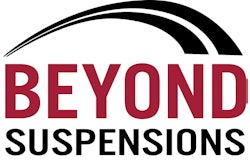
Managing supply chains and capacity will be paramount for commercial vehicle suppliers if a pre-buy occurs in 2025 and 2026.
Success for manufacturers and suppliers during prior pre-buy events were driven by availability. Those who had materials and capacity grew fastest and landed softest, while those who struggled with fulfillment saw market share declines even during a period of growing sales.
During MEMA’s Heavy Duty Dialogue event Tuesday in Pontiac, Mich., Bain & Company Partner Diego Depetris shared how the supplier channel can learn from prior pre-buy experiences to prepare itself ahead of any demand uptick that arrives over the next two years.
[RELATED: How will next week's election impact your business?]
Depetris didn’t forecast a pre-buy as a certainty — though ACT Research’s Kenny Vieth said earlier Tuesday an uptick in production in 2025 and 2026 is almost assured if the economy remains stable and the freight market bounces back — but instead used his time Tuesday to share how the climate around EPA’s impending Phase 3 regulations mirrors the activity the market saw ahead of the 2007 pre-buy.
Trucking weathered the EPA’s initial NOx emission standards in 2001 without the benefit of hindsight. New equipment and expenses poured into the industry, leading a depressed new truck market that lasted into 2004. So when the 2007 regulations appeared on the horizon, carriers were quick to snap up orders.
The strain that put on the supplier and OEM channel was unprecedented. Depetris said OEMs ran production lines ran 24/7 for months to keep up, putting extreme pressure on their vendor partners to meet the increased demand.
 Assembly line workers build a Volvo tractor at the company's New River Valley plant in Virginia.Volvo Trucks North America
Assembly line workers build a Volvo tractor at the company's New River Valley plant in Virginia.Volvo Trucks North America
Depretis believes similar pressures could emerge if the upcoming pre-buy materializes. Demand won’t reach the historic leaps seen in 2006, but in the aftermath of the pandemic supply chain crisis, Depetris said OEMs have becoming increasingly hands-on with their vendors partners.
“[OEMs] have become super focused on their suppliers ability to meet demand,” he said. “Before COVID a lot of pressure was put on price … That shifted to visibility and reliability — especially in the past few years. Cost is coming back a little, but visibility still really matters.”
Depetris advised Tuesday’s attendees to begin preparing immediately to support a pre-buy in this new era of transparency. He said once orders start to rise, OEMs will focus on increasing capacity at existing locations before investing in growth, adding shifts and leveraging automation to drive production efficiencies. And they will expect their partners to do the same.
It won’t be easy.
Depetris said scaling a workforce is much harder in 2024 as it was two decades ago while the increased complexity of powertrain and propulsion systems mean component demands for product lines are in flux.
On the latter, he said suppliers should be working with their OE partners to make sure their first-fit products remain factory options across all vehicle types so their growth potential won’t wane as adoption of battery electric vehicles (BEV) or other solutions rise. Depetris admitted a Class 8 pre-buy will include little to no BEVs, but said in smaller classes acceptance of the technology is growing, as are total cost of ownership (TCO) benefits.
Bain & Company research indicates Class 6 and 7 BEVs could achieve TCO parity with their internal combustion engine counterparts as early as 2027, with initial purchase prices equalizing around 2035.
[RELATED: When (or if?) will the pre-buy start?]
Depetris said the Class 8 market will require “considerably more time to reach parity” due to the higher purchase price and charging opportunity costs, but said suppliers shouldn’t ignore the technology in the years ahead. He said BEV adoption in the Class 4 and 5 space is rising substantially. Suppliers prepared to capitalize on new powertrains will better withstand any shifts in ICE component demand.
Depetris also was quick to caution suppliers Tuesday about the backside of a pre-buy. Any market that goes up will eventually go back down. He advised suppliers to use the market conditions of a pre-buy period to increase automation and develop operational efficiencies they can fall back on when demand subsides to keep profits firm.
“Make hay when the sun shines,” he said.











